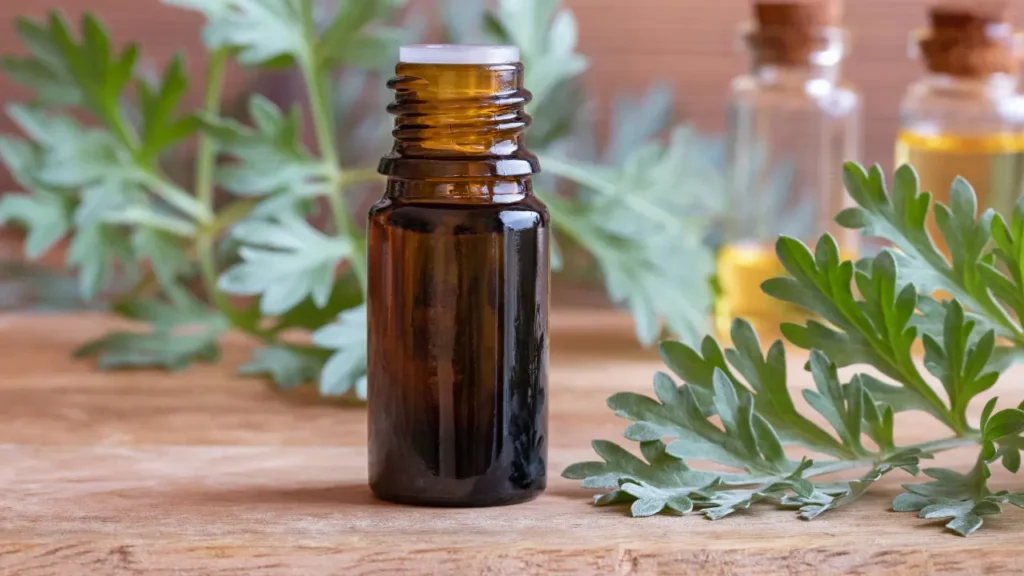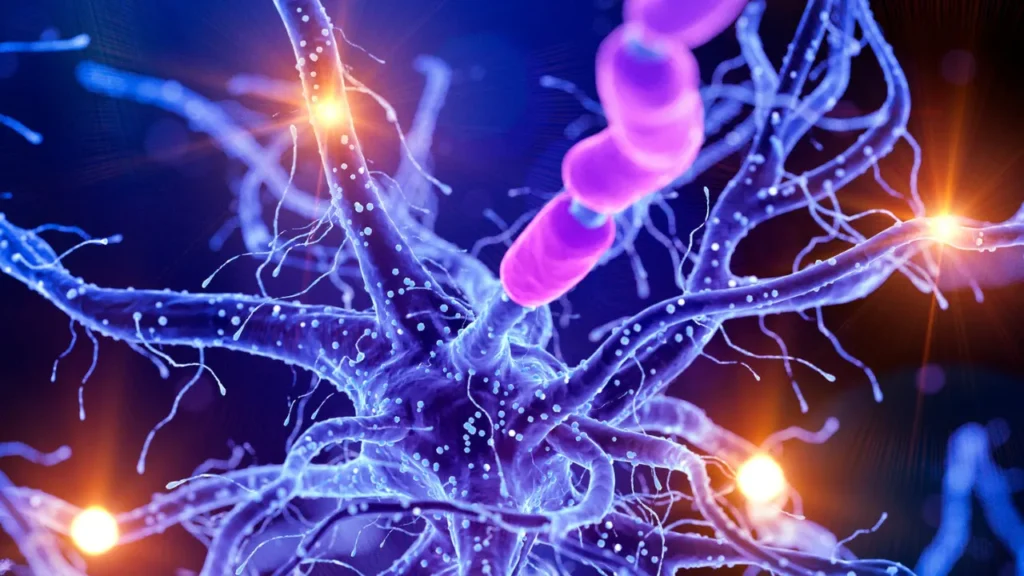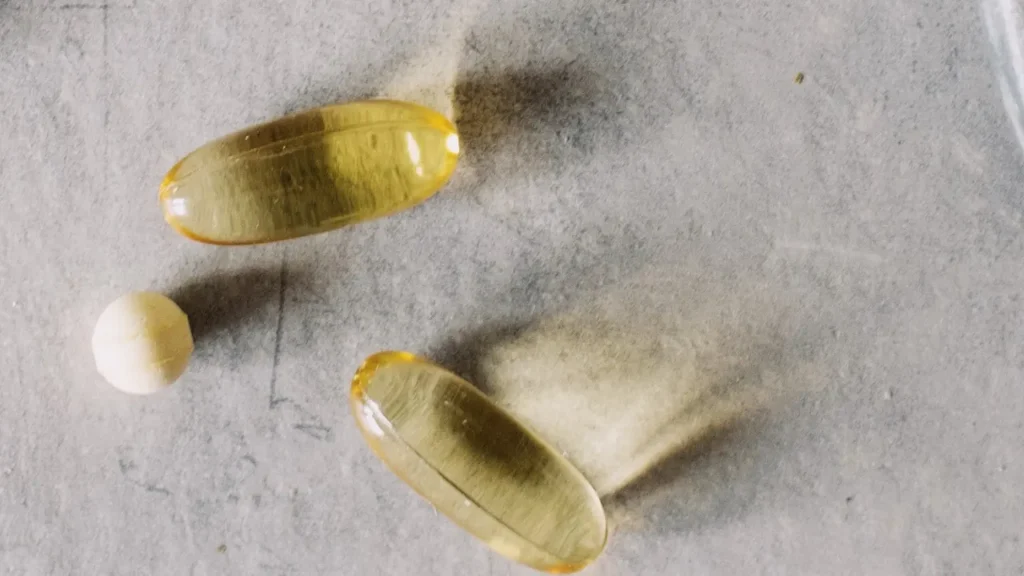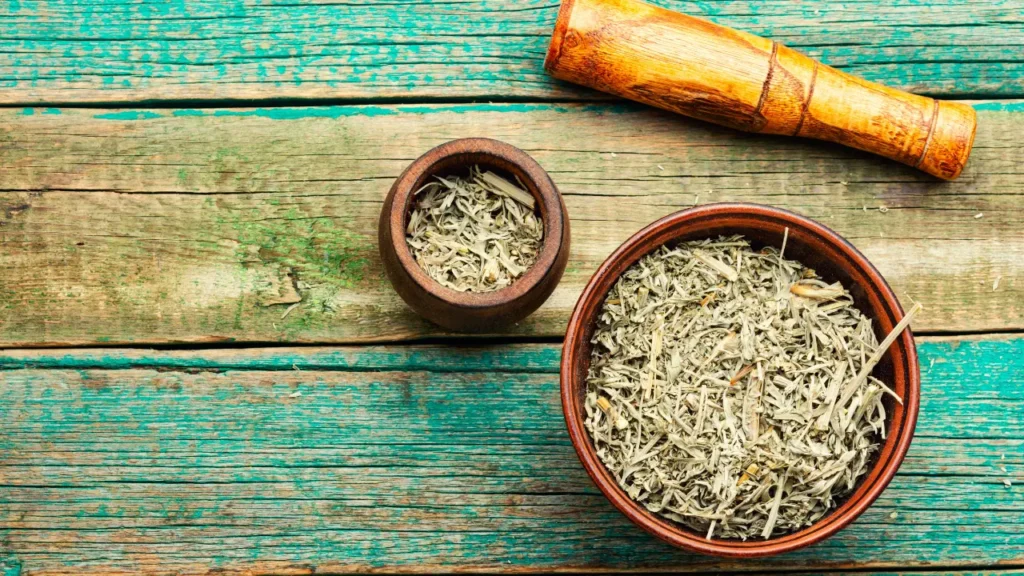The perennial herb known as wormwood (Artemisia absinthium) is indigenous to Europe, Asia, and North Africa. It belongs to the Asteraceae family and is distinguished by its bitter taste and grayish-green leaves. Since ancient times, wormwood has been used in traditional medicine to treat a wide range of conditions, including fever, parasitic infections, and digestive problems. The purpose of this article is to examine the properties of Wormwood, as well as its advantages for health, recommended dosage, negative effects, possible drug interactions, and ethical uses. We’ll also go over Wormwood’s chemistry and the physiological processes that underlie its impact on the body and the mind.
You May Also Like:
The Best Supplements for Brain Injury: 5 Top Brands Reviewed
Finding the Best Supplements for Brain Fog After COVID: 5 Top Brands Reviewed
Wormwood: Benefits, Dosage, Side Effects, Drug Interactions, and Other Important Information is an original (NootropicsPlanet) article.
The Nature of Wormwood
Wormwood’s pharmacological properties are influenced by a variety of phytochemicals that it contains. Volatile oils, flavonoids, phenolic acids, lignans, and sesquiterpene lactones are a few of them that can be found in wormwood. Thujone, a monoterpene is the plant’s main active ingredient which is included in its essential oil. Many of Wormwood’s pharmacological effects, such as its antiparasitic, antimicrobial, and antispasmodic properties, are brought on by thujone.
Health Benefits of Wormwood
a) Antiparasitic activity
Wormwood has long been used to treat parasitic infections, especially those brought on by helminths. Thujone is believed to have antiparasitic properties by paralyzing the parasites and ultimately killing them. This characteristic makes Wormwood a potential substitute for synthetic antihelmintic medications.
b) Digestive Health
Wormwood has a long history of use in the management of gastrointestinal conditions like dyspepsia, bloating, and stomach pain. Wormwood contains bitter chemicals that stimulate the formation of bile and digestive enzymes, facilitating digestion and reducing gastrointestinal discomfort.
c) Microbiological Activity
Wormwood has antibacterial qualities that make it effective against a variety of bacterial and fungal infections. Thujone is thought to participate in this function together with other phytochemicals such as flavonoids and phenolic acids. Wormwood could be used as an alternative treatment for infections, particularly those brought on by bacteria resistant to antibiotics, because these substances have the capacity to damage pathogens’ cell membranes, hinder their growth, and prevent the creation of biofilm.
d) Effects on Antioxidants and Inflammation
Wormwood contains flavonoids and phenolic acids that have anti-inflammatory and antioxidant effects. Wormwood may assist in reducing oxidative stress and inflammation by scavenging free radicals and blocking pro-inflammatory mediators, possibly lowering the risk of chronic illnesses like cardiovascular disease, neurological conditions, and specific malignancies.

Chemistry of Wormwood
Wormwood’s chemistry is characterized by the presence of sesquiterpene lactones, lignans, flavonoids, volatile oils, and phenolic acids. These phytochemicals have a vital role in the plant’s medicinal effects.
a) Volatile oils: Thujone, camphor, and cineole are just a few of the monoterpenes found in wormwood’s essential oil that support its pharmacological effects.
b) Flavonoids: Flavonoids are polyphenolic chemicals having two aromatic rings connected by a three-carbon bridge as their common chemical structure. Depending on the structural differences, they are further split into a number of subclasses, including flavonols, flavones, isoflavones, flavanones, anthocyanidins, and flavonols.
c) Phenolic acids: Phenolic acids are a class of substances distinguished by a hydroxyl group connected to an aromatic ring. Examples of phenolic acids are chlorogenic acid and caffeic acid. These substances have anti-inflammatory and antioxidant effects.
d) Lignans: Lignans are a kind of phytoestrogens that are produced through the phenylpropanoid pathway. They are well known for their anti-inflammatory, antioxidant, and hormone-modulating properties.
e) Sesquiterpene lactones: Sesquiterpene lactones are a class of naturally occurring chemicals with a lactone ring and a 15-carbon backbone. As mentioned, in addition to having a bitter taste, these substances have a number of pharmacological properties, such as anti-inflammatory, antibacterial, and anthelmintic actions.
Physiological Mechanism of Action of Wormwood
The following are the physiological mechanisms of action on the body and brain when you use Wormwood supplement:
a) Thujone is an antihelmintic agent and exhibits antiparasitic properties by killing the parasites. b) Digestive Health Mechanism: Sesquiterpene lactones stimulate the formation of bile and digestive enzymes. This can aid in digestion and reduce gastrointestinal discomfort. Wormwood may also assist the digestive system by relaxing the smooth muscles in the gastrointestinal tract thanks to its antispasmodic qualities.
c) Antibacterial Mechanism: Thujone is thought to also have a role in antibacterial activity when it works with other phytochemicals such as flavonoids and phenolic acids. Wormwood could be used as an alternative treatment for infections, particularly those brought on by bacteria resistant to antibiotics, because these substances have the capacity to damage pathogens’ cell membranes, hinder their growth, and prevent the creation of biofilm.
d) Mechanism of Antioxidant and Anti-Inflammatory Effects: Wormwood contains flavonoids and phenolic acids which reduce oxidative stress and inflammation by scavenging free radicals and blocking pro-inflammatory mediators, possibly lowering the risk of chronic illnesses like cardiovascular disease, neurological conditions, and specific malignancies.
e) Neuroprotective Mechanism: The phytochemicals found in Wormwood can protect neurons from harm and possibly slow the progression of neurodegenerative illnesses by lowering oxidative stress and inflammation in the brain. Gamma-aminobutyric acid (GABA) receptor activation in the central nervous system may also be modulated by thujone, which could explain some of its neuroprotective and antispasmodic properties. Due to the possible toxicity of thujone on the neurological system, it is crucial to keep in mind that using Wormwood in excessive quantities or over an extended period of time may cause neurotoxicity.

Optimal Dosage of Wormwood
Various factors, including the person’s age, weight, and state of health, as well as the specific preparation and form of the supplement, can affect the ideal dosage of Wormwood. Before using Wormwood, it is essential to speak with a medical practitioner to establish the right dosage for your individual requirements.
Side Effects of Wormwood
When used in moderation and at the correct dosage, wormwood is usually regarded as harmless. However, some people might encounter adverse effects like nausea, vomiting, diarrhea, or allergic reactions. Wormwood’s main active ingredient, thujone, has toxic effects on the nervous system and may cause neurotoxicity when used in high dosages or over an extended period of time. If any negative effects appear, it is crucial to stop using it and seek medical advice.
Potential Substance Interactions with Wormwood
Wormwood may interact with several drugs or dietary supplements, reducing their efficacy or raising the possibility of negative side effects. Wormwood, for instance, may interact with anthelmintic drugs because of its antiparasitic effects. Additionally, the action of medications that affect the central nervous system, such as anticonvulsants, sedatives, or anxiolytics, may be hampered by Wormwood’s potential neurotoxic effects. If you are on any prescription medications or dietary supplements, it is imperative to speak with a medical expert before using Wormwood.

Best Responsible Uses of Wormwood
Follow the advice below to ensure that Wormwood is used responsibly:
a) Before using Wormwood, talk to a doctor, especially if you are taking any medications, have a medical condition, are pregnant, or are nursing a baby.
b) Use Wormwood supplements that have undergone independent scientific testing for efficacy and purity.
c) Adhere to the dose recommendations and do not take more than is advised.
d) Keep an eye out for any side effects or negative reactions and stop using the product immediately if you notice any of those side effects.
Wormwood:
Conclusion
Wormwood (Artemisia absinthium) emerges as a supplement with a rich history in traditional medicine. It is derived from the Artemisia absinthium plant indigenous to Europe, Asia, and North Africa. Wormwood is believed to heal digestive issues, have antimicrobial properties, and anti-parasitic activity. Wormwood works against these harmful bacteria, fungi, and parasites because of its active ingredient, thujone along with other phytochemicals in the plant. However, the optimal dosage of the supplement differs by person and you must seek advice from doctors before including it in your routine. You should also source this supplement from trustworthy sellers for your health and well-being.

References:
- Artemisia Absinthium L.-Importance in The History of Medicine, The Latest Advances in Phytochemistry and Therapeutical, Cosmetological and Culinary Uses. Retrieved from:https://pubmed.ncbi.nlm.nih.gov/32825178/
- Wormwood (Artemisia Absinthium L.) –A Curious Plant with Both Neurotoxic and Neuroprotective Properties?. Retrieved from:https://pubmed.ncbi.nlm.nih.gov/20542104/
- Romanian Wormwood (Artemisia Absinthium L.): Physicochemical and Nutraceutical Screening. Retrieved from:https://pubmed.ncbi.nlm.nih.gov/31450704/
Important Note: The information contained in this article is for general informational purposes only, and should not be construed as health or medical advice, nor is it intended to diagnose, prevent, treat, or cure any disease or health condition. Before embarking on any diet, fitness regimen, or program of nutritional supplementation, it is advisable to consult your healthcare professional in order to determine its safety and probable efficacy in terms of your individual state of health.
Regarding Nutritional Supplements Or Other Non-Prescription Health Products: If any nutritional supplements or other non-prescription health products are mentioned in the foregoing article, any claims or statements made about them have not been evaluated by the U.S. Food and Drug Administration, and such nutritional supplements or other health products are not intended to diagnose, treat, cure, or prevent any disease.


